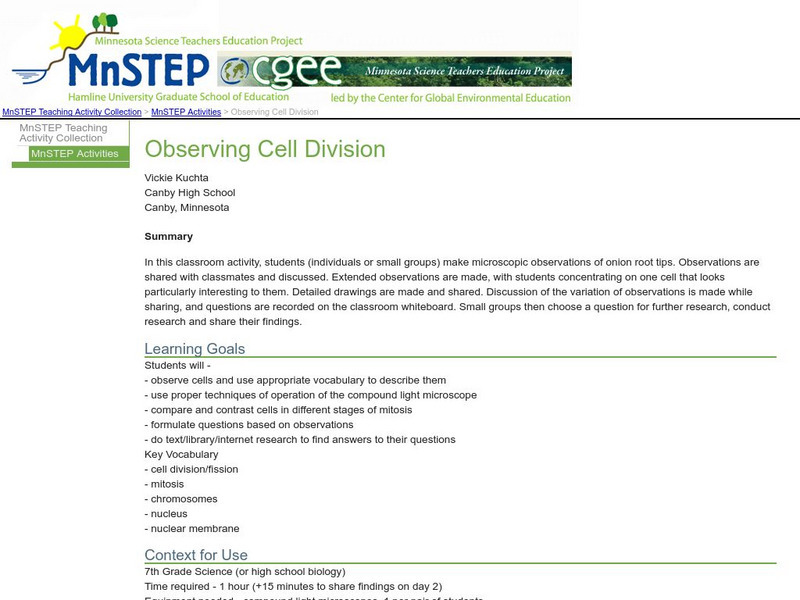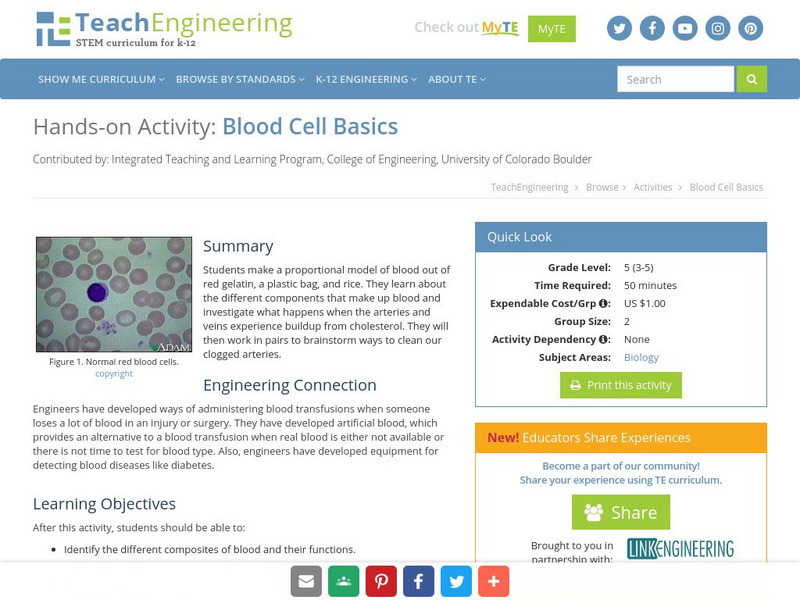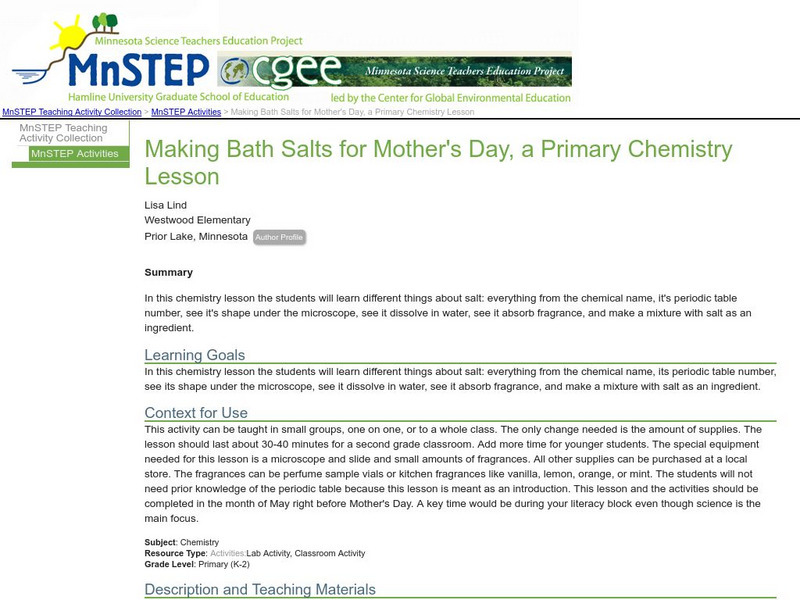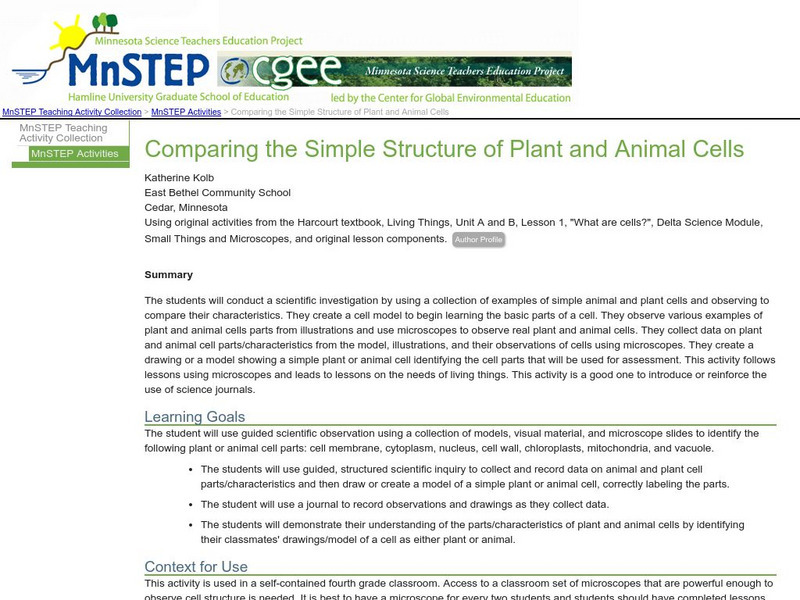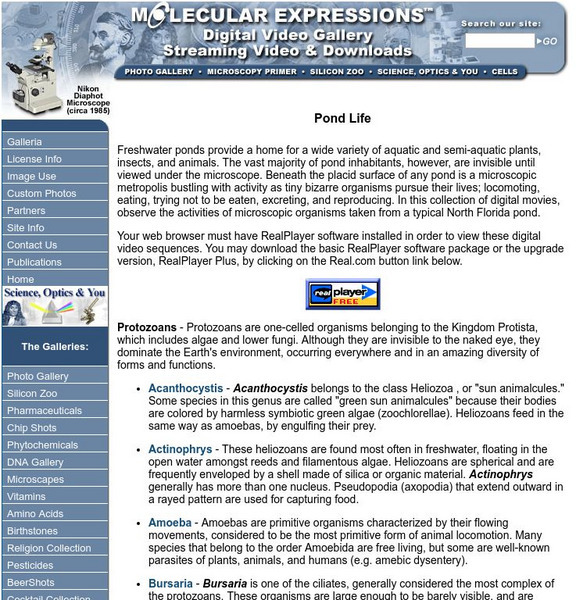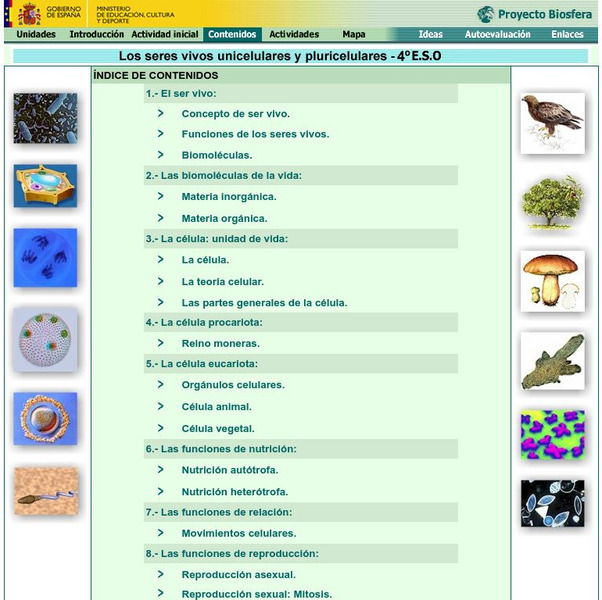My Science Site
Life Systems: Cells, Tissues, Organs
Extensive site for teachers provides some helpful resources that pertain to plant and animal cells. Includes a microscope diagram as well as plant, animal and pond labs. Also contains links to structures and mechanisms, matter and...
Exploratorium
Exploratorium: Microscope Imaging Station: Mitosis Flipbook
Use this series of images depicting the process of mitosis in the early embryo of the fruit fly, Drosophila melanogaster to make a mitosis flipbook. In this stage of Drosophila development, nuclei divide very rapidly without cell...
BioEd Online
Bio Ed Online: The Science of Microbes: Magnifying and Observing Cells
In this activity, middle schoolers create slides of plant cells and observe them under a microscope. The lesson and PowerPoint slides can be downloaded. The included instructional video on cell observation is 20 min. 44 sec.
CK-12 Foundation
Ck 12: Cell Biology
[Free Registration/Login may be required to access all resource tools.] Cells make up all living things but not all cells look alike. This activity introduces cells, cell theory, and the levels of organization in organisms.
TeachEngineering
Teach Engineering: Imaging Dna Structure
Students are introduced to the latest imaging methods used to visualize molecular structures and the method of electrophoresis that is used to identify and compare genetic code (DNA). Students should already have basic knowledge of...
University of Washington
Genome Sciences Education Outreach: Amazing Cells [Pdf]
Multi-activity learning module in which students engage in learning about plant and animal cells through the use of microscopes.
Alabama Learning Exchange
Alex: Cells! Cells! Cells!
Students will learn about both POP Art and science in this pattern project. Working in conjunction with a science teacher in your school, students will view cells through a microscope and use visual diaries to create pattern templates....
TeachEngineering
Teach Engineering: Grow Your Own Algae!
Students discover how tiny microscopic plants can remove nutrients from polluted water. They also learn how to engineer a system to remove pollutants faster and faster by changing the environment for the algae.
Science Museum of Minnesota
Science Museum of Minnesota: Dandelion
In this lesson plan learn the basics of dandelions and how the seeds travel. There are links provided to related books and activities.
York University
Yes I Can! Science: Red Rover, Red Rover
The YES I Can! Science site based out of York University in Toronto is featuring the Mars rovers. The site has all the mission background information teachers need all in one place as well as several great student activities, (Build a...
Science Education Resource Center at Carleton College
Serc: Observing Cell Division
In this activity, students make microscopic observations of onion root tips, discuss them with classmates, then make detailed drawings that are shared.
TeachEngineering
Teach Engineering: Blood Cell Basics
In this lesson students learn about the circulatory system and how it relates to engineering. Then in a hands-on activity they create a model of blood. Students also act out cholesterol in a blocked artery and look at blood cell in a...
Science Education Resource Center at Carleton College
Serc: Making Bath Salts for Mother's Day, a Primary Chemistry Lesson
What do you know about salt? In this chemistry instructional activity, students will learn different things about salt: the chemical name, it's periodic table number, it's shape under the microscope, how it dissolves in water, and how to...
Science Education Resource Center at Carleton College
Serc: Comparing the Simple Structure of Plant and Animal Cells
Students use guided scientific observation using a collection of models, visual material, and microscope slides to identify cell organelles. Then they demonstrate their understanding of the parts/characteristics of cells by identifying...
Science Education Resource Center at Carleton College
Serc: Lab 2: Anatomy of Coral
A lab experiment in a series of experiments that investigates coral. In this activity, students will use a microscope to examine the feeding behavior of a hydra, a fresh-water relative of coral. They will also observe the characteristic...
Huntington Library
Huntington Library: Garden Lesson Plans: Investigation: Pollen Collection [Pdf]
After learning about what pollen is, its health effects, as well as how it benefits humans, middle schoolers take part in a lab activity. For this, they collect schoolyard pollen on slides, stain it, and then examine it under a microscope.
Library of Congress
Loc: What in the World Is That?
Can you match the picture to the correct invention? Read about these inventions and the importance of them. Also included are related sites to find further information about each invention.
Department of Defense
Do Dea: Biology: Unit 3: Cell Structure
In this third unit of a Biology course, students learn about cells and cell structure. They compare prokaryotic and eukaryotic cells and learn about the specialized structures in a cell and what their functions are. They will also learn...
Florida State University
Florida State University: Pond Life
Explore the microscopic organisms that live in the freshwater ponds with this video collection. These video clips feature unicellular organisms, from under the microscope, showing off their daily activities. Collection includes videos of...
National Institute of Educational Technologies and Teacher Training (Spain)
Ministerio De Educacion: Los Seres Vivos Unicelulares Y Pluricelulares
In this unit you will be introduced to the complexity of living things. It also reviews the kingdom of nature, differentiating between their main features from those who are microscopic unit-cellular to the multi-cellular visible to the...
National Health Museum
Access Excellence: Modeling Limits to Cell Size
Why can't cells continue to grow larger and larger to become giant cells, like a blob? Why are most cells microscopic in size? Find out answers to these questions through this "hands-on" activity that simulates the changing relationship...
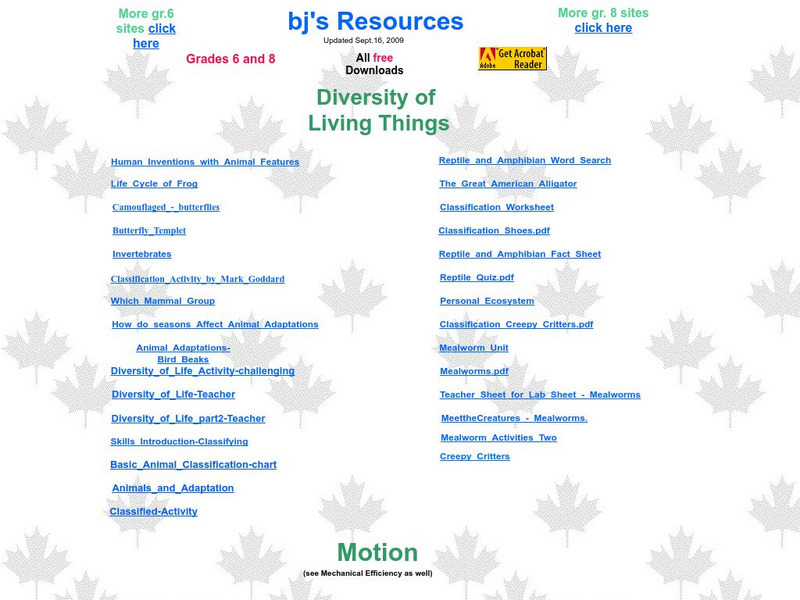




![Genome Sciences Education Outreach: Amazing Cells [Pdf] Unit Plan Genome Sciences Education Outreach: Amazing Cells [Pdf] Unit Plan](https://d15y2dacu3jp90.cloudfront.net/images/attachment_defaults/resource/large/FPO-knovation.png)



